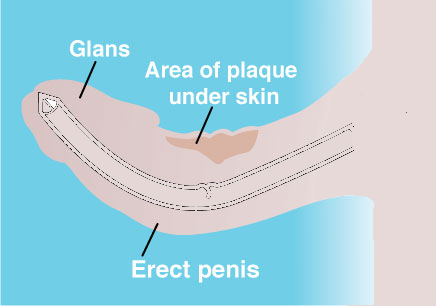Peyronie's disease
Peyronie’s disease is a condition characterized by the development of fibrous scar tissue, known as plaques, within the penis, leading to abnormal curvature, pain, and in some cases, erectile dysfunction. This condition can cause significant discomfort and emotional distress, impacting sexual performance and overall quality of life. The exact cause of Peyronie’s disease is not entirely understood, but it is believed to result from penile trauma, genetic predisposition, or autoimmune disorders. Diagnosis typically involves a physical examination and imaging tests to assess the extent of the curvature and plaque formation. Treatment options range from non-invasive therapies such as oral medications, injections, and shockwave therapy to surgical interventions in severe cases. Early detection and a tailored treatment approach are crucial for managing symptoms and improving outcomes for individuals affected by Peyronie’s disease.

Recommendations for Peyronie’s Disease Treatment
-
Medical Evaluation: Seek a thorough medical evaluation to diagnose the extent of Peyronie’s disease. Understanding the severity and specific characteristics of the condition is crucial for determining the most effective treatment plan.
-
PRP (Platelet-Rich Plasma) Therapy: Consider PRP therapy, which involves injecting platelet-rich plasma derived from your own blood into the affected area. This treatment can promote healing and reduce scar tissue, potentially improving curvature and sexual function.
-
Shockwave Therapy: Explore the benefits of shockwave therapy. This non-invasive treatment uses acoustic waves to break down scar tissue and stimulate blood flow, which may reduce penile curvature and enhance erectile function.
-
Oral Medications and Supplements: Discuss with your doctor the use of oral medications such as pentoxifylline or potassium para-aminobenzoate (POTABA). These can help manage symptoms and slow the progression of the disease. Additionally, some supplements may support overall penile health.
-
Lifestyle Modifications: Implement lifestyle changes to improve overall health and potentially reduce the symptoms of Peyronie’s disease. This includes maintaining a healthy diet, engaging in regular exercise, avoiding smoking, and managing stress levels.
-
Surgical Options: For severe cases where non-invasive treatments are ineffective, consult with a specialist about surgical options. Surgical intervention can correct significant curvature and restore normal function but is usually considered a last resort.

 These recommendations aim to provide a comprehensive approach to managing Peyronie’s disease, combining both innovative treatments and supportive lifestyle changes. For personalized care tailored to your specific needs, consult with Dr. Alla Brouk, a leading expert in the field. Dr. Brouk can assess your individual case and recommend the most effective treatment plan to ensure optimal outcomes.
These recommendations aim to provide a comprehensive approach to managing Peyronie’s disease, combining both innovative treatments and supportive lifestyle changes. For personalized care tailored to your specific needs, consult with Dr. Alla Brouk, a leading expert in the field. Dr. Brouk can assess your individual case and recommend the most effective treatment plan to ensure optimal outcomes.